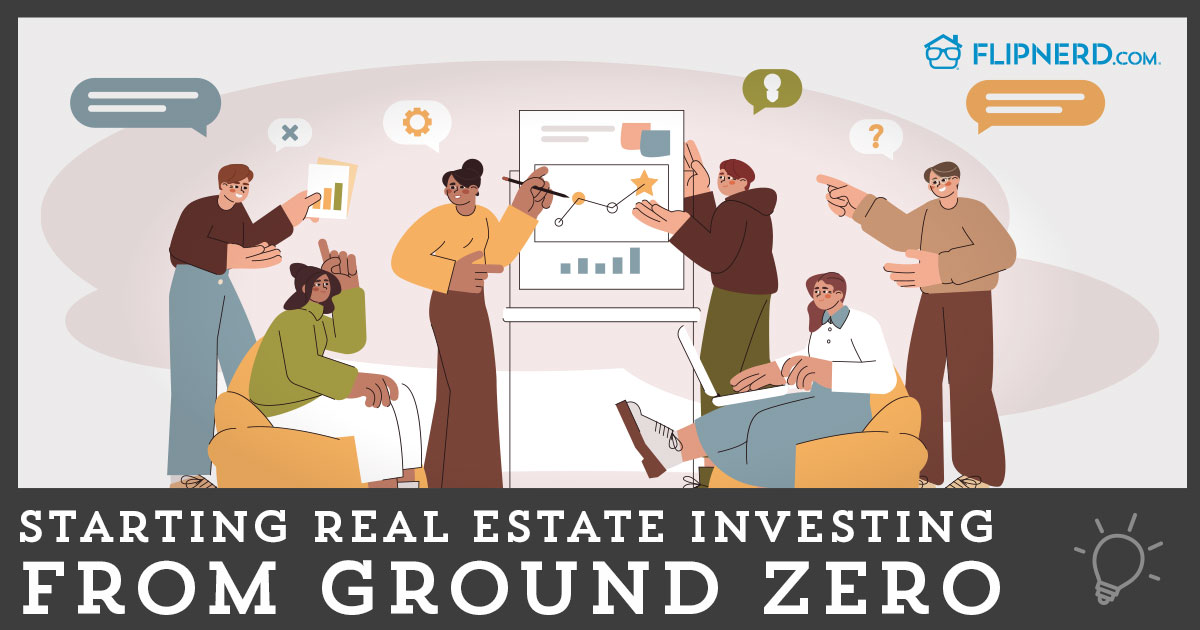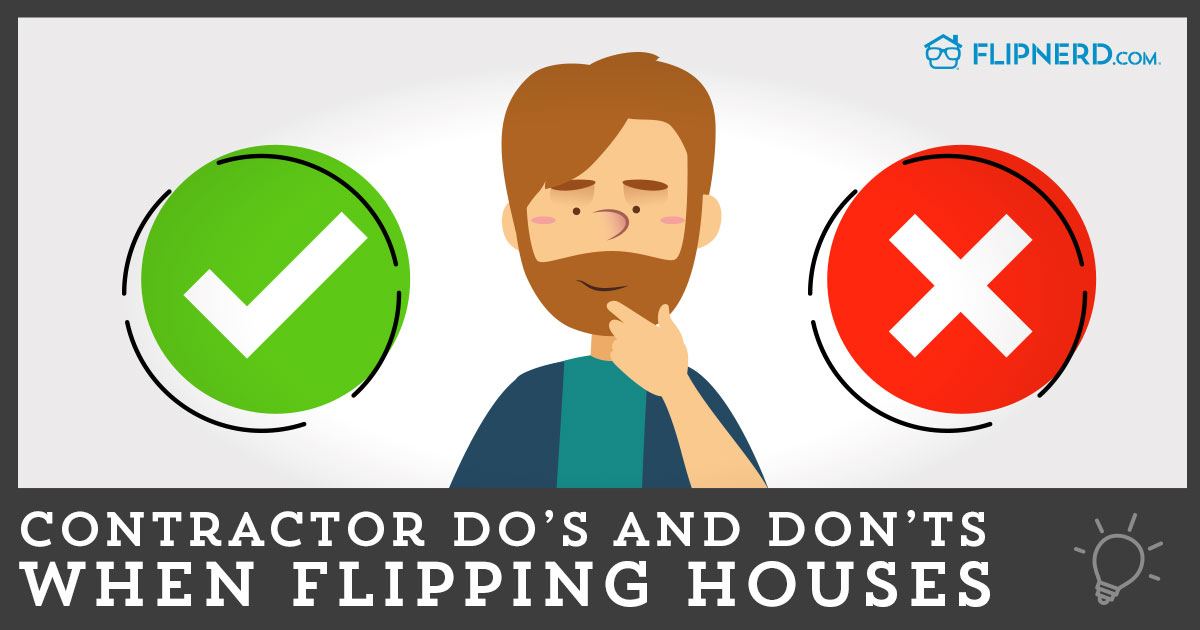Distressed properties can be perfect for real estate investors.
They can normally be purchased at a deep discount, allowing you a budget to rehab the property and (ideally) still make a profit. With the proper walkthrough of the property to estimate the cost of repairs, you can calculate the numbers to make sure that purchasing the property makes sense.
We’ll be covering some of the do’s and don’ts of buying distressed properties. When done right, the profit is there. When done wrong, it can be a major setback.
Do make sure that you (or someone else) walk through the house to get an estimate on repairs that are needed.
While you’re talking and getting to know the buyer, you can walk through room-by-room and calculate the rough cost on what needs to be repaired or replaced.
Concentrate on big-ticket items like the foundation, roof, A/C, electrical, plumbing, and the hot water heater. These are items that are costly and can throw your budget way off if you don’t properly budget for the repair or replacement.
While you’re walking through the property, be sure to listen to the buyer’s motivations on needing to sell. This can provide you insight on how desperate they are to get out of the property, and can give you an idea of what you should offer.
Your offer should only be made AFTER you’ve properly assessed rehab you’ll need to have completed.
Don’t delay!
Get in, get it rehabbed quickly, and sell it. The longer you take, the lower your profit.
With holding costs, they can eat up your profit if you aren’t careful. If you are waiting for a week on a bid, that’s too long!
Find an efficient contractor that can get to the property in a timely manner, provide you with the estimate, and start work immediately.
Have a plan that you can use on all of your rehabs. Pick a neutral paint that works for all houses. Same with carpet, granite, trim colors, etc. If you rehab different price points, have a dedicated option selected for each level.
What’s even better is if you have a general contractor who is reliable and can work on multiple properties for you. This takes out the back and forth of finding workers, negotiating prices, and for determining upgrade choices.
Once the rehab is done, start marketing it! Don’t wait. Waiting will only cost you time and money.
Do give yourself a buffer in your budget.
Normally a 10% – 15% (of the repair estimate) buffer is manageable but this should be adjusted depending on the condition of the property. While you can thoroughly go through a property and assess what needs repairs, there are areas that can come up that you hadn’t budgeted for.
What’s great is that if you don’t need this buffer, it’s pure profit. By being conservative and giving yourself a nice buffer, you can be pleasantly surprised when most of that buffer comes back to you.
It can protect you from a more expensive rehab and lower your stress level when you know this is available in case you need it. Otherwise, you’re left having to decide if you want to take the cost out of your profit or what repair/upgrade not to do.
Don’t over-rehab!
Know the neighborhood, including comps so that you know how much you should rehab. Depending on the price range, it may not make sense to add granite countertops to the bathrooms, for example.
Choose upgrades and repairs that are critical to the property and that bring the property value.
Do get multiple estimates on repairs (If you’re new and don’t have a dedicated general contractor).
If you have a general contractor that you trust and have pricing worked out with, then this doesn’t pertain to you. Most likely, you have set pricing that you’ve both agreed upon and are ready to get started.
If you don’t have a general contractor that you regularly use and have pricing set, you will want to get a few estimates so that you can make sure you’re getting the best work at the best price.
You’ll want to take into consideration how long the job will take them (do they have others to help?) and if they’re working on other jobs right now. If they aren’t working on another job, did they just get finished or are they low on business. You want someone that has a decently full schedule but have the capacity to complete all of their jobs.
Don’t cut critical corners.
When it comes to repairs, don’t go cheap on critical repairs. If something needs replacing and you simply apply a patch that is only temporary, it’s just a waiting game until it becomes a much larger problem.
This can be a waste of your time and money.
When you’re walking through the property before placing an offer, get an idea of the condition of the roof, A/C, foundation, water heater, etc. so that you can properly budge for the right repairs and replacements.
Do know the After Repair Value (ARV).
Do your research and look for properties close by with similar square footage that have been on the market recently. This will give you an idea of what the property is worth.
Always take into account differences such as larger lots, pools, proximity to major roads, etc. These can raise or lower the value of the property.
Make sure you know the ARV when you’re calculating the repair cost and amount you’re able to offer. If you get these numbers wrong, your profit can dwindle quickly.
Don’t try to fix it all yourself.
Most likely, you’re not a handyman with years of experience under your belt. Most investors do this to save on cost if you are learning as you go, it will take you longer, probably won’t look as good, and your time could have been spent growing your business.
While they’re working on fixing up the house, you can be looking for your next deal or building your list. Once you get a good time, it becomes more of a system and your business is able to grow smoothly over time. If you were stuck with a hammer in hand all day, your business would become stagnant as you miss out on deals.
Use recommendations and referrals to find trusted, reliable contractors. Make sure they have the capacity and time for your project so that you don’t fall behind schedule. Also, make sure that whomever you hire doesn’t live too far from the property or it’s likely they won’t be spending full days at your property.
Do expect unexpected repairs.
This is why we mentioned the buffer in your budget earlier. As you can imagine, once you get started with the rehab, new issues might arise. There could be issues in the walls or with the plumbing that you didn’t initially see but have to be fixed before it’s sold.
It’s important to go into a distressed property knowing that you’ll discover hidden repairs or more extensive repairs that you hadn’t originally planned on.
Don’t assume you can get traditional financing.
Conventional financing isn’t available for distressed properties, since they aren’t move-in ready.
If you’re planning on using the property as a rental property, you’ll have to apply for bridge loan (short-term loan) during the rehab (if you need funds) and after it’s been rehabbed, you’ll be able to refinance with a conventional, long-term loan.
For short-term loans, you can usually find them with hard money lenders but some local banks offer this as well.
Do take action!
Once you’ve educated yourself in the business, don’t waste any more time thinking about getting started. Stop with the excuses and figure out the best way to make your first deal become a reality!
There are coaches and mentors out there to help you out, which can be especially helpful during your first few deals. The support that you can get from an active investor who’s been in your shoes can be incredibly beneficial.
In this industry, getting hands on experience is the best way to learn what is going to work for you. Every market is different but if you can find the best strategy for you and your market, you’re setting yourself up for success.









